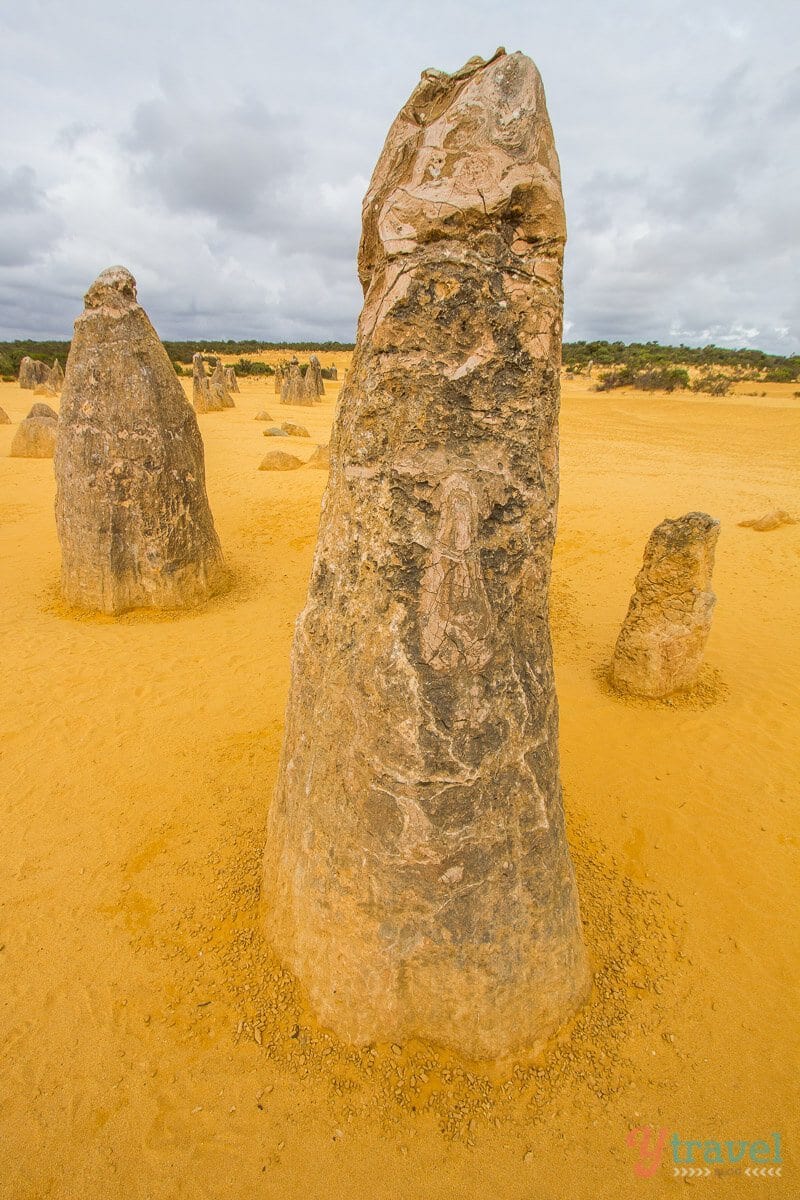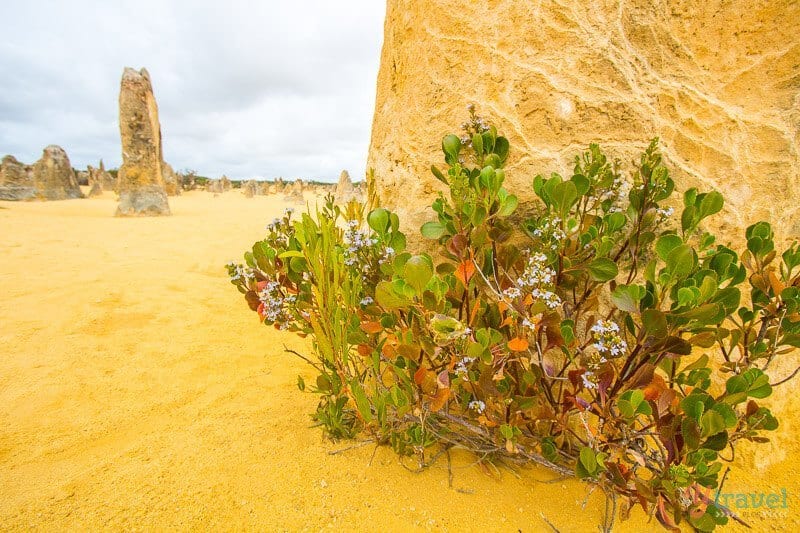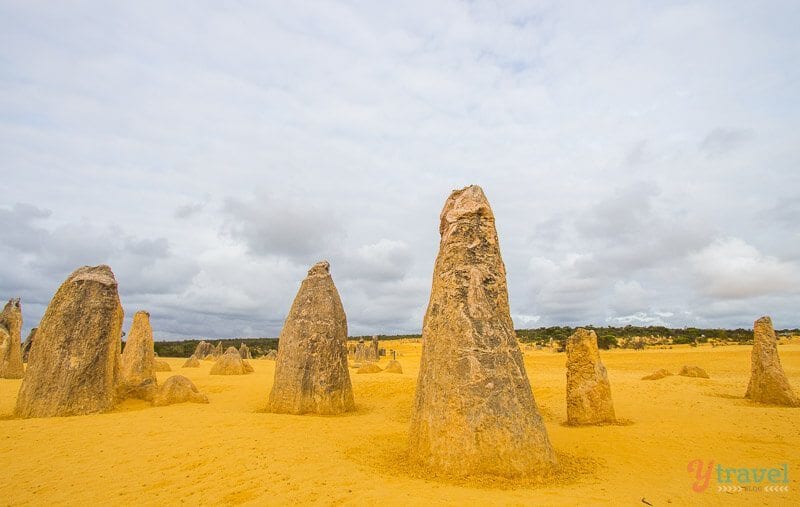This post may contain affiliate links. We may receive a small commission, at no cost to you, if you make a purchase. Read Disclosure.
Western Australia is full of incredible landscapes, but perhaps one of the most special is the ancient limestone formations known as The Pinnacles.
These rock formations are another example of how extraordinarily beautiful this state is.
Formed over 25,000-30,000 years ago, The Pinnacles are the remains of sea shell deposits which stand in unusual pillars.
It is said that after the sea receded, the coastal winds reduced the sand and left the pillars exposed to the elements.
There is no denying that the Pinnacles Desert adds another dimension to this state.
But if you’re thinking of visiting the Pinnacles in Western Australia but not sure how, here is everything you need to know…
Where are The Pinnacles Desert?
The Pinnacles Desert in Western Australia is located in the Nambung National Park just 193 km north of Perth along the Indian Ocean Drive.
To get to The Pinnacles from Perth, you will need to drive 191 km North via State Route 60, which takes roughly 2 hours.
The nearest town is Cervantes, but you will also find accommodation in Jurien Bay which is near to the park. If you need a rental car, check rates and availability from our preferred partner, Discover Cars.
Check out day tours to The Pinnacles from Perth here:
What Are The Pinnacles?

The Pinnacles in Western Australia are weathered rock spires rise out of yellow sand dunes with some standing as high as five metres.
They are geological formations were formed approximately 25,000 years ago after the sea receded and left deposits of sea shells.
In an earlier era, such raw materials were in abundance as there was more sea life.
And over time coastal winds removed the surrounding sand leaving the soft limestone pillars exposed to the elements.
Rainfall caused dissolutional remnants of the tamala limestone to trickle down to the bottom of the sand dunes, which added to the structures.
As well as this, the surrounding sand dunes have many plants and flora, which help protect the dunes from strong winds.

However, when the wind blows, it causes an acidic layer of soil to seep over onto the soil and create a layer of calcrete (a combination of sedimentary rock or hardened deposit of calcium carbonate) to form.
What you see now is a result of a period of extensive solutional weathering and erosion.
You can either walk amongst them (4 kilometres) or you…
Click Here to Read the Full Original Article at y Travel Blog…
